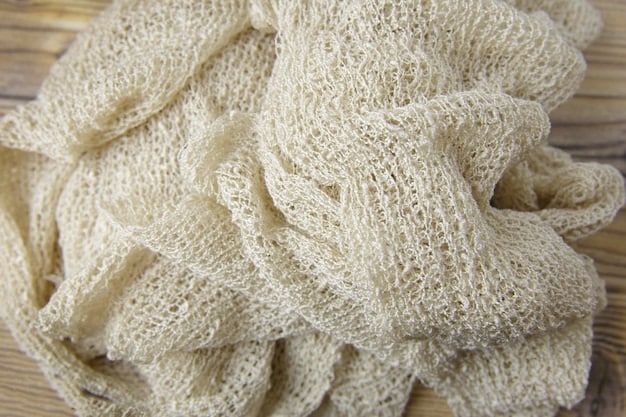How to Identify Sustainable Clothing Brands in 2025: A US Guide

Advertisements
Identifying high-quality sustainable clothing brands in 2025 requires US shoppers to evaluate materials, production processes, brand transparency, and certifications, ensuring both style and ethical consumption.
Navigating the world of ethical fashion can feel overwhelming. This guide helps US shoppers confidently identify high-quality sustainable clothing brands in 2025, ensuring your wardrobe choices align with your values.
Advertisements
Understanding Sustainable Fashion
Sustainable fashion is more than just a trend; it’s a movement toward minimizing the fashion industry’s negative impact on the environment and society. Let’s delve into what makes fashion truly sustainable.
Defining Sustainable Fashion
Sustainable fashion encompasses a range of practices aimed at reducing waste, conserving resources, and ensuring fair labor practices. It challenges the fast-fashion model, promoting durability and ethical production.
Advertisements
Key aspects include using eco-friendly materials, reducing water consumption, minimizing carbon emissions, and ensuring fair wages and safe working conditions for garment workers.
The Impact of Fast Fashion
Fast fashion’s relentless cycle of trends leads to overconsumption and enormous waste. The environmental consequences are staggering, including pollution from textile production and the disposal of unwanted clothing.
- Environmental Pollution: Textile dyeing and finishing processes release harmful chemicals into waterways.
- Resource Depletion: Fast fashion relies heavily on natural resources like cotton, which requires vast amounts of water and pesticides.
- Waste Generation: Millions of tons of clothing end up in landfills each year, contributing to soil and air pollution.
Choosing sustainable brands helps mitigate these negative impacts, supporting a healthier planet and a more equitable industry.

By understanding the principles of sustainable fashion and the consequences of fast fashion, you can make informed choices that support ethical and environmentally responsible brands.
Key Indicators of High-Quality Sustainable Clothing
Identifying high-quality sustainable clothing requires a keen eye and a bit of investigation. Here are the critical indicators that distinguish genuine sustainable brands from those merely engaging in greenwashing.
Material Matters
The type of materials used is a primary indicator of a brand’s sustainability. Look for eco-friendly options such as organic cotton, recycled fibers, and innovative materials like Tencel and hemp.
Organic Cotton: Grown without synthetic pesticides and fertilizers, reducing environmental harm.
Recycled Fibers: Made from post-consumer or post-industrial waste, diverting materials from landfills and reducing the need for virgin resources.
Production Processes
Sustainable brands prioritize environmentally friendly production methods. This includes reducing water and energy consumption, minimizing waste, and using non-toxic dyes and finishes.
- Water Conservation: Implementing water-efficient dyeing and washing techniques.
- Waste Reduction: Utilizing fabric scraps and minimizing packaging.
- Chemical Management: Adhering to strict standards for chemical use, such as the Oeko-Tex certification.
Transparency in supply chains and production processes is crucial. Brands that openly share information about their manufacturing practices demonstrate a commitment to sustainability.
Keep an eye out for brands that are transparent about their whole production methods, including suppliers.
Certifications and Labels to Look For
Certifications and labels provide assurance that a product meets specific sustainability standards. Familiarizing yourself with these can help you quickly assess a brand’s credibility.
GOTS (Global Organic Textile Standard)
GOTS is the gold standard for organic textiles, ensuring that the entire supply chain, from harvesting to manufacturing, meets rigorous environmental and social criteria.
This certification covers issues such as the use of organic fibers, wastewater treatment, and fair labor practices.
Oeko-Tex Standard 100
Oeko-Tex Standard 100 certifies that textiles are free from harmful substances, ensuring they are safe for human health and the environment.
This label is particularly important for clothing that comes into direct contact with the skin.
Fair Trade Certification
Fair Trade certification ensures that producers and workers receive fair wages and operate in safe working conditions. It promotes economic empowerment and sustainable development in developing countries.
- Supporting Fair Wages: Ensuring garment workers receive a living wage.
- Promoting Safe Conditions: Requiring safe and healthy working environments.
- Empowering Communities: Investing in community development projects.
Looking for these certifications can help you identify brands that are truly committed to ethical and environmental responsibility.

Remember, certifications are a tool to help you make informed decisions, but it’s also important to look beyond labels and consider a brand’s overall commitment to sustainability.
Brand Transparency and Supply Chain Visibility
Transparency is key to verifying a brand’s sustainability claims. Look for brands that openly share information about their supply chain, manufacturing processes, and social and environmental initiatives.
Understanding Supply Chain Transparency
Supply chain transparency involves providing detailed information about every stage of the production process, from raw material sourcing to finished product.
This includes knowing where materials are sourced, who makes the garments, and what environmental and social standards are in place.
Questions to Ask
Ask brands questions about their sustainability practices. Do they have a code of conduct for suppliers? Do they conduct regular audits of their factories? How do they address issues of human rights and environmental protection?
Engaging with brands and seeking information demonstrates your commitment to sustainable choices and encourages greater transparency in the industry.
Resources for Research
Several resources can help you research brands’ sustainability efforts. Websites like Good On You and Fashion Revolution provide ratings and information on brands’ environmental and social performance.
- Good On You: Offers brand ratings based on environmental impact, labor practices, and animal welfare.
- Fashion Revolution: Promotes transparency through its annual Fashion Transparency Index.
- Brand Websites: Look for detailed information on a brand’s website about its sustainability initiatives.
By leveraging these resources, you can gain a deeper understanding of a brand’s commitment to sustainability.
Investigating more about brands and their promises is key to choosing those that are aligned with your sustainable goals.
The Role of Technology in Sustainable Fashion
Technology is playing an increasingly important role in advancing sustainable fashion. From innovative materials to traceability solutions, technology is helping to create a more transparent and efficient industry.
Innovative Materials
Scientists and designers are developing new materials that are more sustainable than traditional options. These include fabrics made from recycled plastic, plant-based alternatives to leather, and bio-based textiles.
These innovations reduce reliance on virgin resources and minimize environmental harm.
Traceability Solutions
Blockchain technology and other traceability solutions are helping to track the journey of clothing from raw material to finished product. This provides consumers with greater transparency and accountability.
By scanning a QR code or accessing a digital platform, consumers can learn about the origins of their clothing, the manufacturing processes involved, and the environmental and social impact.
E-commerce and Circular Economy
E-commerce platforms are facilitating the growth of the circular economy by making it easier for consumers to buy, sell, and trade used clothing. This extends the lifespan of garments and reduces waste.
- Online Resale Platforms: Sites like ThredUp and Poshmark offer a convenient way to buy and sell used clothing.
- Rental Services: Renting clothing provides access to a wider range of styles without contributing to overconsumption.
- Digital Wardrobes: Apps that help you organize and track your wardrobe, encouraging mindful consumption and reducing impulse purchases.
Technology empowers consumers to make more informed and sustainable choices, driving positive change in the fashion industry.
Keeping up with innovation empowers you to choose brands that embrace technology for sustainability.
Supporting Local and Independent Sustainable Brands
Supporting local and independent sustainable brands can have a significant positive impact. These smaller businesses often prioritize ethical production, community engagement, and environmental stewardship.
The Benefits of Local Brands
Local brands often have shorter supply chains, reducing carbon emissions associated with transportation. They are also more likely to support local economies and create jobs.
Additionally, local brands may be more transparent about their production processes and committed to fair labor practices.
Finding Independent Brands
Discovering independent sustainable brands can be an exciting journey. Look for local boutiques, farmers’ markets, and online marketplaces that feature handmade and ethically produced clothing.
- Local Boutiques: Explore boutiques that specialize in sustainable and ethically made clothing.
- Online Marketplaces: Platforms like Etsy and Fashionkind showcase independent brands with a focus on sustainability.
- Craft Fairs: Attend craft fairs and markets to discover unique, handmade pieces from local artisans.
Building relationships with local and independent brands allows you to support businesses that align with your values.
It’s more than just shopping; it’s about supporting people who are pushing for a sustainable future.
| Key Point | Brief Description |
|---|---|
| 🌱 Eco-Friendly Materials | Prioritize organic cotton, recycled fibers, and innovative textiles for a reduced environmental footprint. |
| 🛡️ Certifications | Look for GOTS, Oeko-Tex, and Fair Trade labels to ensure ethical and environmental standards. |
| 🔍 Transparency | Choose brands that openly share supply chain details and manufacturing processes. |
| 💻 Technology Integration | Support brands utilizing traceability tech and e-commerce for circular fashion. |
FAQ
▼
Common sustainable materials include organic cotton, recycled polyester (rPET), Tencel (lyocell), linen, and hemp. These materials have a lower environmental impact compared to conventional options.
▼
Look for certifications like GOTS, Oeko-Tex, and Fair Trade. Check the brand’s website for detailed information on their supply chain and sustainability initiatives. Use resources like Good On You for ratings.
▼
Greenwashing is when a brand deceptively promotes itself as environmentally friendly. Avoid it by looking for specific certifications, investigating the brand’s practices, and being skeptical of vague claims.
▼
Sustainable clothes can sometimes be more expensive due to higher production costs and fair wages. However, they are often more durable, offering better long-term value. Consider buying less and choosing well.
▼
Technology like blockchain can provide supply chain transparency, QR codes can offer product details, and e-commerce platforms can facilitate buying used or rented clothes, all aiding sustainable choices.
Conclusion
As we move closer to 2025, the importance of sustainable clothing brands will only continue to grow. By considering materials, production processes, looking for key certifications, and prioritizing brands that show transparency we can ensure that our fashion choices align with our values for a future we can all be proud of.